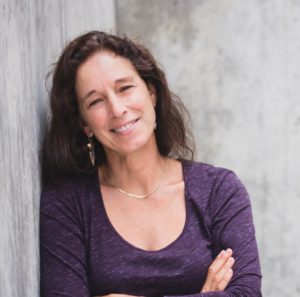
You may have heard of pinch points. Or not. I’d guess that most fiction writers have no clue what they are or why they’re so important.
What the heck are pinch points? Do you need them? Where do they go in a novel, and what’s their purpose?
I don’t know if you’re like me, but I cringe when told I have to put X into Y at exactly 3.74 meters. As with any key milestones in your novel, you want your story to dictate where these plot elements go, and pinch points are no exception.
That said, there is still the overarching expected novel structure to keep in mind. Think, road as opposed to brush alongside the road. It’s a smoother journey (and more likely you’ll make it to your destination) if you stay on the paved road rather than veer off onto the verge and into the vegetation.
So at the very least, novelists should be aware of the key markers or milestones they need to position in the story as their protagonist journeys to his goal (and if you still haven’t realized this is what a novel is truly all about, read my posts on this topic—they are myriad. Just type “protagonist goal” in the search bar of my website listed in my bio).
To put simply, your story starts in the middle of something happening in the life of your protagonist just before an incident or disturbance upends him and redirects his attention.
Shortly after that, events push the character to fix his goal for the book, at about the 25% mark.
So what happens after that 25% mark? Your character is now going after his goal, and, if you have a strong concept and premise, he’s going to be facing all kinds of opposition that make it hard for him to reach it.

The First Pinch Point
Enter that first pinch point. Somewhere between that 25% mark and the midpoint, the primary opposition needs to raise its ugly head. Whether it’s a singular opponent or nemesis; or a natural force, such as a tornado; or an entity or group, such as the legal system or Congress; the pinch point brings to the forefront the opposition.
This helps show how high the stakes are.
Pinch points also focus on the emotional change in the character as he reacts to the new situational development that occurs at these pinch points.
This doesn’t necessarily imply you can’t show your antagonist earlier in the story, or that this moment is meant to bring full attention to him (or it).
Here are some examples of the first pinch point in stories you may be familiar with:
- The Hunger Games: Katniss enters the game and is attacked, flees, and discovers Peeta has abandoned her and joined a group of killers.
- The Help: Miss Hilly announces over coffee that she’s going to publish her “Home Help Sanitation Initiative” in the local newspaper.
- Raiders of the Lost Ark: Indy thinks Marion is dead. He confronts Balloq and threatens to kill him. Stakes go higher.
- The Empire Strikes Back: The Emperor tells Darth Vader to hunt down Luke Skywalker. (The protagonist doesn’t have to be in the first pinch point scene.)
- Alien: The alien detaches Kane’s face and hides in the ship where the crew can’t find it.
- Top Gun: Right after Maverick (Tom Cruise) screws up big-time on a practice flight, Iceman (Val Kilmer) confronts him in the locker room, pointing out how he’s risking lives.
The Protagonist’s Reaction
This first pinch point is pointing to the main confrontations of your story. It’s beginning to show the immensity of the challenge for your protagonist. And often that reveals a big flaw in your protagonist.
Think about that moment in Top Gun. Maverick, after being confronted, realizes his serious flaws. If he doesn’t deal with them, they could cause disaster. This awareness pushes him to that midpoint scene.
The result of this new development in your story is centered on the protagonist. Because now, he has to do something about this new development, once he learns about it. At this point in your story, he has new information, and that moves him to new action.
Don’t Forget Action-Reaction
I constantly remind writers that everything in story is about action-reaction. Something happens, a character reacts. He decides on a new action because of that, then gets back into action. This is the natural cycle of behavior. We hear or see something, we process, we make a decision, we act.
So this pinch point reveals something key about the opposition, which causes the protagonist to choose and then act, which barrels toward the midpoint.
With a natural event such as a storm or tornado, the stakes are raised and the hero makes a greater commitment to his goal (maybe to save someone in the storm). The point is to show how hard it now is going to be to reach that goal, which should add tension and drama to your story.
Really, all that pinch point is doing is showing the hero progressing toward his goal with the greater stakes and opposition revealed.

The Second Pinch Point
Whereas the first pinch point introduces the power of the primary opposition to your protagonist, the second pinch point reveals the full force of that power and all it portends. Fairy tales often display these pinch points in perfect location. Little Red is on her way to Granny’s at the first pinch point and encounters the wolf (after the inciting incident of learning Granny is sick). And what happens at that second pinch point? Little Red has arrived at the cottage and is noting those big teeth Granny has, followed by the sinking realization it isn’t Granny lying in bed in that cute nightgown and bonnet.
Key plot developments often occur at the second pinch point: a friend dies or betrays the heroine, the key plan to reach the goal falls apart, some unexpected twist throws the biggest obstacle yet in your heroine’s path.
Frodo getting chased by the black riders in The Fellowship of the Ring introduces the force of the opposition in the first pinch point. But having Gandalf fall into Moriah, leaving the fellowship grieved and leaderless creates an even more difficult situation in the second pinch point. New, harder decisions must now be made, and the door to great conflict between the characters has now opened.
In my novel Colorado Promise, the second pinch point occurs when my heroine is shocked by the public announcement that she’ll be marrying Randall—a coup d’etat by her father, who is her primary opposition in her pursuit of the love of cowboy Lucas Rawlings. Now it seems impossible that Emma and Lucas will ever get together.
As with all my novels, I didn’t plan that to fall at exactly the 62% mark in my book. I just pulled up my handy desktop calculator, multiplied the total number of pages by .62, and voila!
Focus on the Conflict!
Wondering just where the term “pinch points” came from, I did what every smart person in the world does: I Googled. While there are a few sources, I particularly like this (from Safeopedia): “Pinch points are points in and around machinery where there is a chance of a body part getting caught between a stationary and a moving part of a machine.” There is “a chance of entrapment.” Nice, right?
Think of those key moments—one early in your story and one before the climax—in which you can put your character in a vise. Pinch him hard. Make him yell.
When Bruce Wayne’s mansion is destroyed and he’s left for dead by his nemesis in Batman Begins, he’s in quite a pinch.
We often see characters in the most hopeless of situations at this point in the story. Play it up, make it big. Make it hurt.
This doesn’t have to be a high-action scene though. In a relational drama or women’s fiction, this pinch point might look like a heated argument that results in the protagonist losing the support of her best friend, forcing her to make that last push to her goal, which seems impossible.
I hope you see how important pinch points are in your story. Can you come up with a key scene to showcase your primary opposition in your novel at the first pinch point? What about a highly intense conflict-packed scene right before the climax that raises the stakes unbearably high for your protagonist? Don’t have anything yet? Well, no better time to work on those pinch points than right now. My hope is this challenge will “pinch” you into writing a great novel!

C. S. Lakin is the best-selling author of 20+ novels and 10 writing craft books. She teaches online video courses on writing craft to hundreds of writers at her online school Writing for Life Workshops. If you want to master pinch points and all other aspects of novel structure, enroll in her course The 10 Key Scenes That Frame Up Your Novel, and get her book Layer Your Novel. Get $50 off the course by using coupon code 50-OFF (good till the end of 2022). Visit her website at LiveWriteThrive.com.
***
Happening Soon on Apex
Tonight at 7 pm Mountain Time
Every week, Forrest Wolverton holds the Apex Accelerator Program. This program is designed to help motivate writers and help them get past the obstacles in their life to become the best writer they can be. There aren’t very many writing groups out there that have motivational speakers!
Monday at 5:30 pm Mountain Time
Come join us for Monday evening strategy meetings. We will be working to give authors tools, knowledge, and motivation to create original, best-selling stories and the self-defined successful careers they want. Some weeks, we will focus on high level strategic areas writers need to consider and plan for, and other weeks, we will get down to the details of strategy implementation. Don’t miss out. We meet every week at 5:30 MT. Come strategize!
Monday at 7 pm Mountain Time
Kevin Beggs is Chair of the Lionsgate Television Group and Lionsgate Chief Content Integration Officer, overseeing development and production of all scripted and non-scripted programming. A 24-year veteran of the Company and a member of its corporate senior management team, he has spearheaded the strategic expansion of Lionsgate’s television production operations into one of the largest independent television businesses in the world.
Since joining Lionsgate in 1998, Beggs has guided the Television Group’s growth into a leading supplier of premium content to streaming, cable and broadcast networks. The studio is coming off one of its most successful years with over a dozen new series picked up by networks and eight current series already renewed for additional seasons, adding to a slate of nearly 70 series and 600 hours of programming spanning dozens of platforms. Recent successes include the hit comedy Ghosts (CBS), the biggest new comedy of the season, Home Economics, ABC’s highest rated new comedy, Love Life ad Minx for HBO Max, Mythic Quest, already renewed for its third and fourth seasons on Apple TV+, Welcome to Flatch on FOX, the breakout Zoey’s Extraordinary Christmas holiday special for Roku Channel, and the hit series Power Book II: Ghost, Run the World and Power Book III: Raising Kanan heading a pipeline of 15 series in production for or airing on Starz.
Beggs has shepherded iconic series including eight seasons of the multiple Emmy Award ® winner Mad Men, one of the most acclaimed shows in television history, seven seasons of the ground-breaking Orange is the New Black, eight seasons of the hit comedy Weeds and six seasons of the popular Dead Zone.









